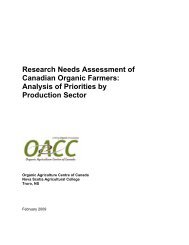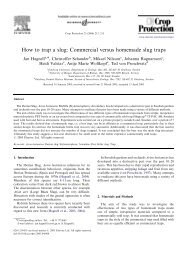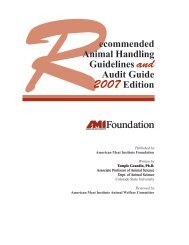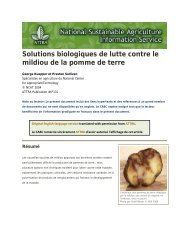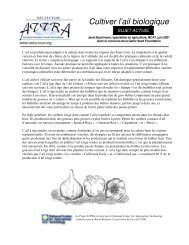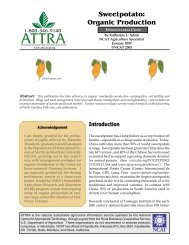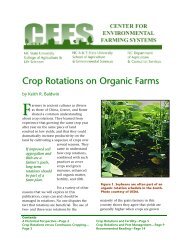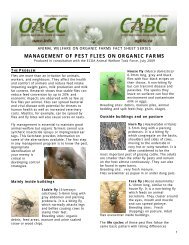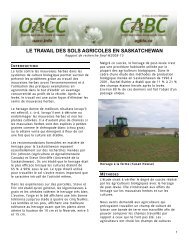Create successful ePaper yourself
Turn your PDF publications into a flip-book with our unique Google optimized e-Paper software.
Nitrogen FixationOne of the most significant contributionsthat legume cover crops make to the soil isthe nitrogen (N) they contain. Legumecover crops fix atmospheric N in their planttissues in a symbiotic or mutually beneficialrelationship with rhizobium bacteria. Inassociation with legume roots, the bacteriaconvert atmospheric N into a <strong>for</strong>m thatplants can use. As cover crop biomassdecomposes, these nutrients are released <strong>for</strong>use by cash crops. Farmers should make anef<strong>for</strong>t to understand this complex processbecause it will help them to select theproper legumes <strong>for</strong> their cropping plan,calculate when to incorporate cover cropsand plant cash crops that follow, and planfertilizer rates and schedules <strong>for</strong> those cashcrops. Above all, they need to inoculatelegume seed be<strong>for</strong>e planting with theappropriate Rhizobium species.<strong>Cover</strong> Crop TipNonleguminous cover crops, typically grassesor small grains, do not fix nitrogen. Nonetheless,they can be effective in recovering mineralizednitrogen from soil after crops areharvested.The N associated with cover crop biomassundergoes many processes be<strong>for</strong>e it is readyto be taken up <strong>for</strong> use by cash crops. Theprocess begins with biomass N, which is thenitrogen contained in mature cover crops.From 75 to 90 percent of the nitrogencontent in legume cover crops is containedin the aboveground portions of the plant,with the remaining N in its roots andnodules (Shipley et al., 1992).When legume or grass cover crops are killedand incorporated into the soil, livingmicroorganisms in the soil go to work todecompose plant residues. The biomassnitrogen is mineralized and converted firstto ammonium (NH 4) and then to nitratecompounds (NO 3) that plant roots can takeup and use. The rate of this mineralizationprocess depends largely on the chemicalcomposition of the plant residues that areinvolved (Clement et al., 1995), and onclimatic conditions.Determining the ratio of carbon to nitrogen(C:N) in the cover crop biomass is the mostcommon way to estimate how quicklybiomass N will be mineralized and released<strong>for</strong> use by cash crops. As a general rule,cover crop residues with C:N ratios lowerthan 25:1 will release N quickly. In thesoutheastern U. S., legume cover crops,such as hairy vetch and crimson clover,killed immediately be<strong>for</strong>e corn plantinggenerally have C:N ratios of 10:1 to 20:1(Ranells and Wagger, 1997). Residues withC:N ratios greater than 25:1, such as cerealrye and wheat, decompose more slowly andtheir N is more slowly released.A study conducted in 1989 reported that 75to 80 percent of the biomass N produced byhairy vetch and crimson clover residues wasreleased eight weeks after the cover cropswere incorporated into the soil (Wagger,1989a). This amounted to 71 to 85 poundsof N per acre. However, not all of thereleased N was taken up by the subsequentcorn crop. The corn utilized approximately50 percent of the N released by bothresidues. (This value may be con-sidered theN uptake efficiency of corn from legumeresidues. This value is similar to the Nuptake efficiency of corn from inorganicfertilizer sources, such as ammoniumnitrate.) The N not taken up by the followingcrops may still contribute to soil health.Living microbes in the soil may use thenitrogen to support population growth andmicrobial activity in the soil.<strong>Organic</strong> Production—<strong>Cover</strong> <strong>Crops</strong> <strong>for</strong> <strong>Organic</strong> <strong>Farms</strong> 7



